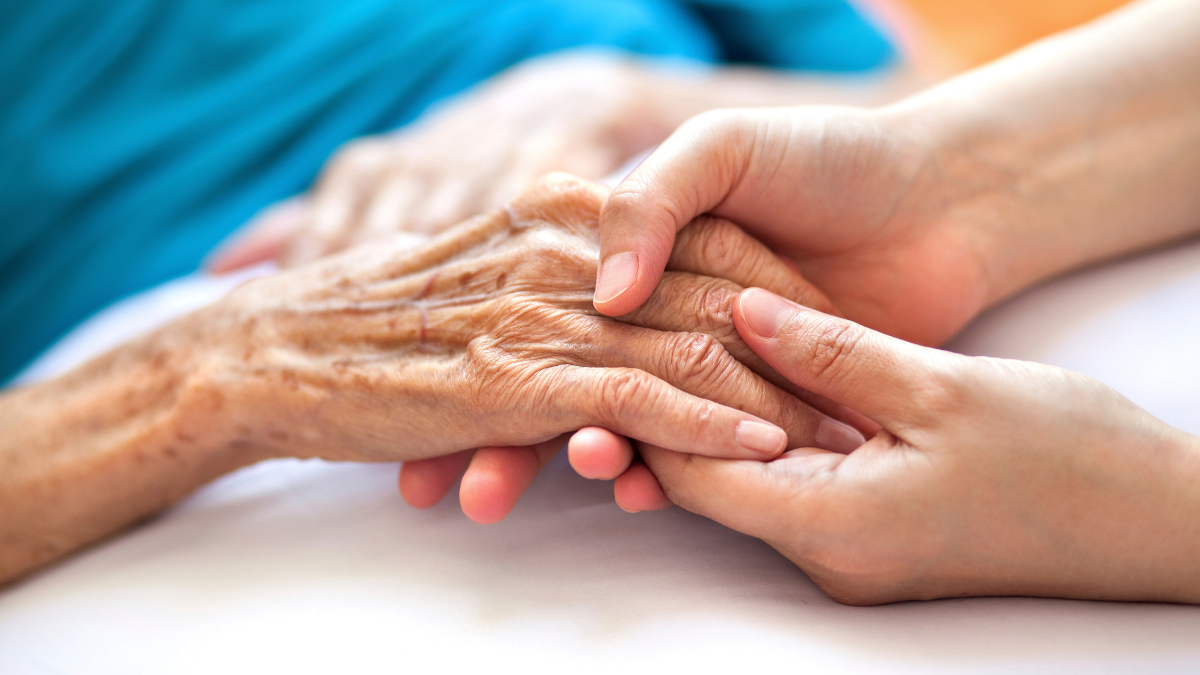The Role of Massage Therapy in Palliative Care: Enhancing Comfort and Quality of Life
Massage therapy is known to improve health and well-being during all stages of life. From prenatal massage to hospice and palliative care massage, our profession can increase comfort and mobility for everyone.
Through extensive innovations within science and medicine, human beings are living longer than ever before. Palliative care, specifically through massage, can be an important approach to maintaining longevity and ensuring comfortability later in life.
Let’s explore what massage therapists should know about practicing massage therapy within a palliative care setting.

What is the difference between hospice and palliative care?
Hospice and palliative care share the common goal of improving quality of life and providing support for individuals with serious illnesses. However, hospice is distinct in that it is an insurance benefit specifically available to people diagnosed with a terminal illness and a life expectancy of six months or less. This difference is crucial because palliative care does not focus solely on end-of-life preparation but instead aims to maintain or enhance quality of life at any stage of illness.
Massage can function as hospice or palliative care, and the distinction does not significantly alter the nature of the massage. However, the circumstance and context of the massage will vary between hospice and palliative care. Understanding the difference can help you address the needs of your clients more specifically.
What are the benefits of palliative massage?
Palliative massage has similar benefits to that of regular massage: pain relief, relaxation, stress-relief, and more. For palliative care clients, massage has been shown to improve common symptoms such as nausea, depression, anxiety, pain, and sleep issues. Individuals receiving palliative care are living with a serious illness, and massage can act as an important component of self-care and comfort.
What are the characteristics of palliative massage?
Importantly, palliative care is an approach to massage rather than a specific technique. It’s typically characterized by its slow movements and soft touch, and a common goal of this work is to activate the parasympathetic nervous system which allows patients to feel benefits without creating resistance. The relaxation many people experience during massage can help mitigate their stress response, allowing their bodies to focus on natural processes.
What should therapists know about palliative care?
Palliative massage can be incredibly rewarding, for both therapists and clients. However, there are a number of things to keep in mind when considering this specialization.
Proper Intake is Vital
While proper intake is always vital to a successful, ethical massage experience, it is especially important when interacting with clients with terminal illness. Checking in regarding a client’s medical condition is necessary, but you also need to understand their emotional state and how their condition may affect their mental health. Remember, you need to be vigilant about boundaries and the scope of the practice--the aim is not to fix anything, in a therapeutic sense. The focus of the massage session should be to provide relief and comfort to the client during this challenging time.
Adapt to Unique Environments
Due to the nature of palliative care, therapists may be visiting clients in hospitals, homes, or outpatient facilities, meaning that the massage setting will be quite different from a typical session. Further, there may be environmental challenges such as tubing, machines, and other medical equipment. Ensuring that the massage does not interfere with medical devices is of utmost importance.
Prioritize Self-Care
Palliative massage is known for its slow, deliberate pacing, which helps enhance client comfort. However, this technique can be physically demanding for massage therapists as it requires sustained pressure over extended periods. The slow, repetitive movements can place additional strain on the therapist’s body. Beyond the physical challenges, palliative massage also carries an emotional toll as therapists regularly work with individuals facing long-term illnesses. Given these demands, practicing self-care is essential for those who provide palliative massage.
Palliative massage is an important and impactful integrative care approach. Learn more about it by checking out the article, “The Role of Massage Therapy in Palliative Care,” in the Massage Therapy Journal.
Related Resources
Massage Therapy Journal
Explore AMTA's award-winning publication which covers massage therapy techniques and research, practical self-care tips, and business practices.
Self-Care CE Courses
Your work as a massage therapist is demanding, learn self-care strategies to add to your regimen and earn CE credit along the way.